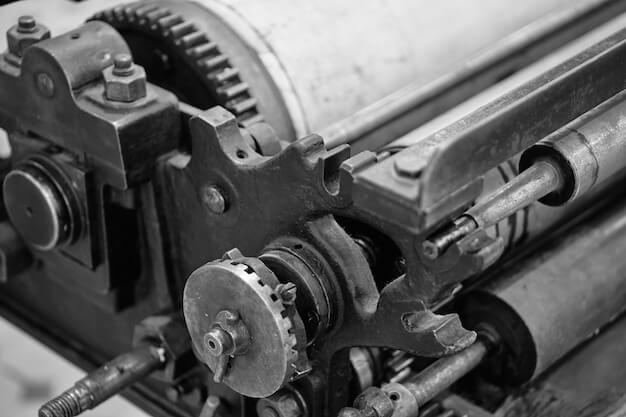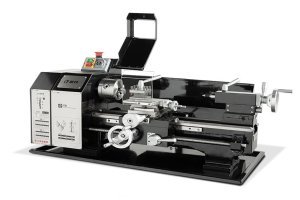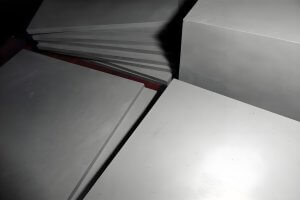Introduction to 5-Axis CNC Machining in Aerospace Applications
The 5-axis Computer Numerical Control (CNC) machining is a technological innovation critical to the aerospace industry that brings about improved precision and enhanced efficiency. Unlike its predecessors such as the 3-axis and 4-axis machines, this technology provides five degrees of freedom for tool movement, thus enabling more complex shapes to be machined with high accuracy across five different axes simultaneously.
- Firstly, it reduces the number of setups required: This means fewer chances of error due to manual interventions, leading to improved accuracy.
- Secondly, by utilizing all five axes concurrently, end product lead times are significantly reduced.
- Lastly, 5-axis CNC increases tool life because it operates at optimal cutting points, minimizing wear.
In the context of aerospace applications, where parts need to uphold stringent quality criteria in terms of complexity, size, weight and reliability, the benefits of a 5-axis CNC machine are invaluable. Examples include manufacturing intricate components like turbine blades or aircraft wings which require exceptional precision.
The Basics of 5-Axis CNC Machining
5-axis CNC machining is a state-of-the-art manufacturing process that employs computer numerical control (CNC) to operate machine tools via software commands. Essentially, this method involvesmovement along five different axes at the same time during the machining process. Unlike typical three or four-axis machines which work in either X, Y, and Z linear dimensions with rotational movements allowed around one axis -4th-, 5-axis CNC machines can move in all these directions simultaneously plus another rotational movement on a second axis-5th-. This execution allows complex geometry and intricate designs to be accurate and precise.
- Definition: A 5-axis CNC machine refers to equipment capable of moving a tool or a part in five different axes simultaneously, enabling high-quality machining on complicated shapes.
- Difference from Other CNC Machines: Compared to other forms of CNC machinery such as the common 3-axis and 4-axis kinds, 5-axis CNC machines offer superior precision due to their enhanced positional and rotational capabilities. Also, they tend to accomplish tasks more quickly given their simultaneous motion, thereby enhancing process efficiency.
Titanium: An Essential Material for Aerospace Applications
Titanium is a high-strength, low-density material celebrated for its excellent resistance to corrosion and unparalleled strength-to-weight ratio. These distinct properties make Titanium an ideal material in the demanding field of aerospace manufacturing.
- High Strength & Low Density: Despite being lightweight, Titanium offers incredible strength that allows it to endure immense pressure seen in aerospace applications. Its favorable strength-to-weight ratio makes it a preferred choice over heavier materials such as steel.
- Corrosion Resistance: Naturally resistant to environmental factors, Titanium holds up against extreme temperatures, corrosive environments, and other harsh conditions synonymous with air and space travel – significantly increasing durability and lifespan of components.
- Aerospace Suitability: Given these benefits, the usage of titanium enhances overall performance while minimizing weight – an important factor considering fuel efficiency and payload capabilities in aerospace vehicles. Furthermore, the stability of titanium across a wide range of temperature assures reliability under different flight conditions.
Groundbreaking technological innovations like 5-axis CNC machining have further propelled the potential of titanium by enabling precise handling and manipulation of this metal, delivering top-tier component quality at optimized speed and cost.
The Unmatched Precision and Efficiency of 5-Axis CNC Machining with Titanium in Aerospace Manufacturing
5-axis CNC machining with titanium offers unmatched precision and efficiency in aerospace manufacturing. It enables the production of complex aerospace components with minimal setups, reducing weight without sacrificing quality or performance. This process is crucial for creating intricate parts such as hydraulic manifolds, transmissions, and landing gear for aerospace applications.
Real-World Application and Benefits of 5-Axis CNC Machining of Titanium
In the competitive world of aerospace manufacturing, the advancements in 5-axis CNC machining of titanium play a pivotal role. An example is its successful application in the production of aircraft engine components. These vital parts are subject to high stress loads and intense temperatures thus require materials with exceptional strength and tolerance like titanium. With the precision offered by 5-axis CNC machines, manufacturers can create complex geometries that would have been unachievable using traditional methods.
- The benefits outlined in section IV align perfectly with this case study; these include substantial material usage reduction, enhanced accuracy and finish quality. The advanced technologies render machining highly efficient and precise, resulting in a significant decrease in wastage.
- Moreover, intricate structural components can be produced in a single setup, minimizing discrepancies in dimensions due to movement between multiple setups and ultimately reducing lead times.
- This aids not only in increasing productivity but also in maintaining cost-effectiveness in contrast to conventional machining – a crucial factor for businesses operating in the demanding aerospace sector.
Possible Struggles with Using 5-Axis CNC Machines
In the realm of aerospace manufacturing, maximizing precision is crucial. Yet various issues may arise when utilizing 5-axis CNC machines that can affect this precision. One common issue operators might face is toolpath errors due to incorrect data input or a software glitch, potentially leading to inaccuracies in the final product. Another problem could be the difficulty in managing the simultaneous movements of all five axes, which requires substantial expertise and understanding.
Fortunately, simple solutions exist for these struggles. To prevent toolpath errors, consistently inspect and verify the entered data’s accuracy and regularly update and maintain the machine’s software. This would help ensure smooth operation and correctness at every processing stage. Overcoming the challenge of managing multi-axis operations requires continuous experience, training, and possibly adopting improved simulation techniques to better comprehend the machine’s potential and complexities.
- Common Issue: Toolpath Errors
- Solution: Regularly inspect data input, maintain software updates
- Common Issue: Managing Multi-Axis Operations
- Solution: Continuous Experience, Training & Adopting Simulation Techniques
Conclusion
In conclusion, the utilization of 5-axis CNC machining in titanium processing significantly enhances precision and efficiency essential for aerospace applications. This advanced machining process eliminates multiple setups by allowing simultaneous five-sided machining that results in a dramatic reduction of errors.
- The minimized tool vibrations and ability to maintain constant chip load ramp up productivity while preserving accuracy.
- This technology’s adaptability is second to none given its capacity to handle complex geometries associated with various aerospace components without compromising quality control.
- The high-resistant attributes of titanium used gives upgraded durability and strength necessary in creating robust parts in the aerospace industry which further promotes reliability and longevity of pieces made.
This surmise is an attestation of how embracing 5-Axis CNC Machining technologies indeed revolutionizes operations within the aerospace sector providing optimal performance demanded by this field.
Other Articles You Might Enjoy
- Precision 5-Axis CNC Machining in the Automotive Industry
The automotive industry is an integral part of our daily lives, shaping our work commutes and leisure activities. Within this industry, CNC automotive technology plays a pivotal role, transforming the…
- Precision Rotor Blade Prototypes through 5-Axis Machining
Rotor blades are essential components in aero engines, responsible for converting the energy of a flowing medium into mechanical work. While many may find rotor blades mysterious, passionate engineers dedicate…
- Precision CNC Machining of Stainless Steel: Innovations and Best Practices in Aerospace Machining
Introduction: Precision CNC Machining and the Use of Stainless Steel Precision Computer Numerical Control (CNC) machining, a vital technology within the manufacturing industry, uses pre-programmed software to guide machinery towards…
- CNC Machining for Aerospace Applications: Titanium vs. Aluminum Alloys
CNC Machining in Aerospace: An Introduction and Overview Computer Numerical Control (CNC) machining is a manufacturing process that utilizes software-directed machines to fabricate complex parts with high accuracy and repeatability.…
- Aerospace CNC Machining: Precision Engineering for the Skies
CNC (Computer Numerical Control) machining stands as a cornerstone in the production of aerospace components, where its application spells the difference between success and catastrophic failure. In an industry that…
- Impeller five-axis CNC precision machining technology
The impeller is the most important part on the rotor, and is generally composed of a wheel disc, a wheel cover and a blade. An integral impeller is an impeller…






